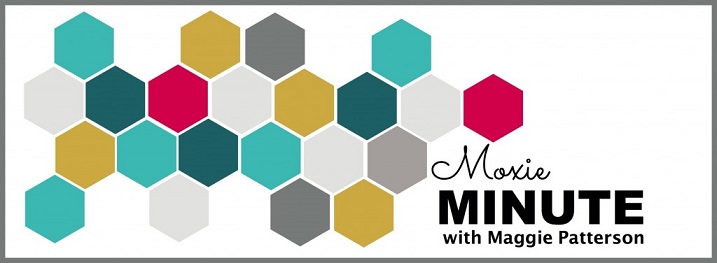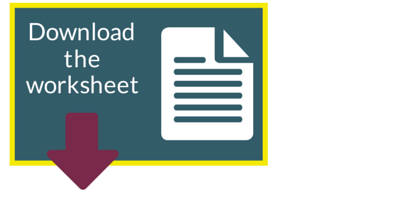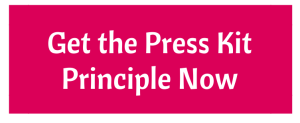Category: content marketing strategy
Over the last couple weeks, I’ve had Kenny Rogers’ The Gambler running through my head at various intervals. With some consideration, I’ve realized that it’s no accident that this song is on repeat.
If you really tune in…this song delivers in a big way.
As entrepreneurs, I think we all should take a few minutes and consider the many gifts that Kenny Rogers gives us in this song. Serious business lessons for entrepreneurs.
Before you ask, I am not joking. Read on for an explanation. Plus, you’ll get some insight into my “special” connection with this song. Which will either make you laugh or think I’m stuck in my glory days of the 90s.
1. The Influence of Storytelling
Whether or not you like country music, it’s hard not to love this song. Why? The power of the story.
On a warm summer’s evenin’ on a train bound for nowhere,
I met up with the gambler; we were both too tired to sleep.
So we took turns a starin’ out the window at the darkness
‘Til boredom overtook us, and he began to speak.
You can literally see it happening in your head. The steam train. Their weathered faces. The sound of cards being shuffled. Hell, I can smell that train car.
Talk about high impact storytelling.
Next time you create a piece of content, how can you use storytelling and activate people’s senses so they can see, smell and taste. Instead of merely writing content, you are creating an experience.
By tapping into the senses you can help create an emotional connection with you and what you are sharing. That’s why a powerhouse storytelling will always trump logic, because our senses simply take over to process it and our brain works differently.
2. Solid Life/Business Advice
Trying to figure out your next move? Whether to continue or quit?
Kenny has you covered in the chorus with this solid advice:
Know when to hold ‘em, know when to fold ‘em.
Know when to walk away, know when to run.
Seriously. Doesn’t that sum up everything you need to know about your business? This entrepreneurial gig is not for the faint of heart. Learning when to hold on for dear life for a wild ride is one thing. But you also need to know when to admit to yourself that things are busted ass broken down.
Yes, it’s a little more nuanced than what Kenny lays out for us, but the most powerful skills we can develop in our business give us the tools to hold ‘em, fold ‘em, walk away or run.
But how? For starters, develop your intuition. Trust your gut instinct and stop fighting it or second guessing yourself.
Conversely, discern when your intuition has been hijacked by the lure of riches or shiny objects. Programs, sales pages and content are designed to short circuit your gut feelings and logic. That next program or coach is not necessarily what’s going to help you have your Cinderella story.
[Tweet “Do you know when to walk away, know when to run? @magspatterson muses on The Gambler and entrepreneurship http://bit.ly/1h7THEe “]
Sometimes the sheer force of will of wanting something is not enough. You may need to channel some Kenny to help you make better business decisions from scrapping the program no one is buying to getting a bridge job if you need to. True entrepreneurs do what they need to do.
3. Crazed University Students & Creating Community
Fun fact: If you join The Official Kenny Roger’s Fan Club you get a packet in the mail with a welcome letter and mouse pad. I can only hope the mouse pad has Kenny’s face on it.
Every highly successful celebrity, personality or business has a subset of their community that will do anything for them. That are devoted, loyal and fervent.
Wouldn’t you like to have those type of fans/customers?
Hello. Where do I sign up?
That type of thing simply doesn’t happen overnight. I comes from showing up day in, day out and bringing it.
Bishop’s University where I took my B.A. is a very small school, in an even smaller town. A small school makes for cray cray spirit and community in spades, including discussions of bleeding purple and being able to sing the school song on cue 50 years after you graduate.
At some point during my four years, one of the DJs started playing The Gambler as the last song of the night at the campus pub.. The first time, the second time, the third time, everyone was thrown…but committed to his vision, that DJ kept on it.
Over time, The Gambler as the last song of the night became a “thing”. To the point where the crowd of crazed students would pound on the floor and yell “one more time, one more time.” That tradition continued for years, breeding probably some of the most unlikely Kenny Rogers fans ever.
A few years ago when I went back for my 10 year reunion, the night ended with The Gambler. And that night they played it four times before kicking all of us out. It was played as the last song of the night at my wedding and most of my friend’s weddings. I’ve discussed it with fellow grads that graduated years after I did.
That is the power of community. It’s committing to a vision. It’s unwavering in the face of a more popular choice. It’s about creating something bigger than the people involved, even if it is a dated country music song as a rallying point.
What can you do in your business to have your customers yelling “one more time” or being so committed to you that they include you major business or life events? Maybe it won’t be that extreme, but you want that deep connection so they love, respect and trust you.
So, what other songs can we dissect for some business lessons? (I need some new songs for the loop in my head.) Comment below.
[Tweet “What The Gambler and 700 college students can teach you about building community. New blog post from @magspatterson http://bit.ly/1h7THEe “]
 Episode #11 continues the Brilliant Basic Training Series with a look into the world of SEO.
Episode #11 continues the Brilliant Basic Training Series with a look into the world of SEO.
Does SEO scare you? Or maybe you don’t even know what it is? Good news, on today’s episode we’re going deep on Search Engine Optimization with guest expert Liz Lockhard. Liz helps demystify the world of SEO and gives us some SEO basics.
Items Discussed in this Episode:
-
What is Search Engine Optimization (SEO)?
-
The best way to get started with SEO
-
The importance of getting clear on your ideal customer for SEO purposes
-
Tips for finding the right SEO keywords
-
Why you need to build an umbrella to capture the keywords for your site
-
Checking your keywords before you write a blog post
-
What you need to do with your URL
-
Using the Yoast SEO plug-in to simplify your SEO and keep you on track
-
What is a metadescription?
-
Establishing authorship and what it means to SEO
-
Ways to break into organic traffic using on-site SEO and off-site mention in an effective way
[Tweet “Guest expert @lizlockhard makes SEO less scary on the #marketingmoxie #podcast “]
Top 3 Takeaways for this Episode:
-
On WordPress install the Yoast plug-in
-
Put your idea customer first, find the language and words people will actually be using
-
Don’t rely on one traffic strategy so we aren’t impact by a single change to Google or a Social Network.
Links for this Episode:
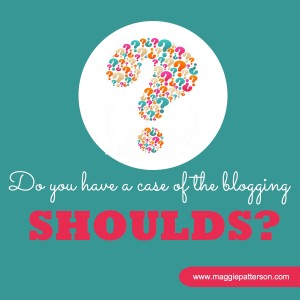 It’s Monday night so it’s time to get your weekly blog post done. You sit staring at the screen. You pop over to Facebook and then you get caught up on the latest celebrity gossip blind items and did you know that….oh wait, it’s two hours later and still nada, nothing, zippo, zilch has been written.
It’s Monday night so it’s time to get your weekly blog post done. You sit staring at the screen. You pop over to Facebook and then you get caught up on the latest celebrity gossip blind items and did you know that….oh wait, it’s two hours later and still nada, nothing, zippo, zilch has been written.
Tick, tick, tick. You throw in the towel and opt to watch three episodes of House of Cards or Orange is the New Black on NetFlix instead.
Tuesday comes and goes and still no blog post. The pattern continues for weeks…until it feels ridiculously awkward to suddenly post on your blog.
Does this exact thing sound familiar? I thought so. I call this a case of the blogging “shoulds”…as in I’m blogging because I should, not because I know what to say or because I really feel connected to this in any way.
Creating content doesn’t need to be hard. If writing 500 or 1000 words about a topic related to your life or business seems this challenging, this post is for you.
Why Are You Blogging?
I’ve been blogging personally and professionally for longer than I care to admit. I’ve played the role of coordinator, editor, content wrangler, promoter and writer.
Inevitably, there reaches a point where the blog isn’t shiny and new, it hasn’t been an overnight success. The blog becomes just another thing to do on the to do list and coming up with the idea for a new post feels like trying to suck a bowling ball through a straw.
Every time this issue comes up, it’s because of a single thing.
We don’t really know WHY we are blogging. We’ve lost the why for the blog or didn’t really ever have it in the first place.
[Tweet “Why are you blogging anyways? New blog post from @magspatterson”]
You know that whole Simon Sinek Start with the Why approach to business and leadership? Much like with your business, if you aren’t connected to your purpose or cause, you are going to struggle with your blog content.
Why Exactly Are you Blogging?
Blogs have become something of a marketing “should”. The refrain is that we “need” a blog.
WHY?
If you stop and really think about it in the context of your vision and mission for your business, do you really know WHY you are blogging? Aside from the fact it is the “thing” to do or everyone else is doing it…
There are plenty of reasons why to blog from a marketing standpoint. It could be to create community and connection to showcase your expertise or drive traffic to your site…but please…let’s get real for a second.
For most of you, your blog is not your business. If you build it they will not come. Especially if you are too busy watching four hours of random reruns on NetFlix come Monday night.
Struggling with your content week after week is a sign that you need to lock down already and figure out the purpose for your blog. Start by asking yourself these questions:
- What’s the purpose of your blog?
- Why are you blogging? Is this the best way to share this content?
- Why would your audience read it?
- What do they need from you?
- How can you share this information in a new or unique way?
Deep thoughts, right? Getting a clear understanding of why you are blogging and how it connects to your business makes creating a plan for your content and managing it week over week, dare I say it? Simple.
Not convinced? Think we’re all just navel gazing here about our why when we should be writing content?
Listen to this. Last week, one of my clients told me that since going through the process of getting clear on her blog’s why and getting strategic about what exact content would support her business, that writing posts is so much easier and she’s getting way more engagement.
That my friends is no accident. That’s the power of clarity.
[Tweet “Doing anything because you should sucks, including blogging. New blog post from @magspatterson “]
Enough said. Stop blogging for a checkmark or because you should. Maybe a blog isn’t the right thing for your biz or you have some work to get connected with that why. Whatever you decide, make it the right decision for you and end the pain and misery of struggling for a topic to write about.
Take Action: What’s your blog’s why? Don’t write another post until you have a clue why you are doing it.
Introducing Content Camp
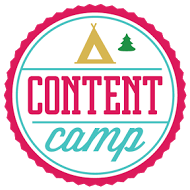
Are you struggling with your content? Seriously slacking off and you’ve not sent a newsletter for….well, since you can’t remember when? You are flying by the seat of your pants every week to figure out blog posts, social media and more? Or do you just have no idea where to freakin’ start with any of it?
It’s time to kick your content apathy to the curb and get ready for Content Camp! This is a beta offering with special pricing. Click here for all the details.
 With the podcast in place which is uber practical, I’ve been thinking a lot about what to actually blog about. I’ve had a couple conversations lately have really are making me think about how I can contribute – in a positive way – to creating a dialogue about the realities of entrepreneurship. If you will, sharing the ugly bits of what it is like to be an entrepreneur.
With the podcast in place which is uber practical, I’ve been thinking a lot about what to actually blog about. I’ve had a couple conversations lately have really are making me think about how I can contribute – in a positive way – to creating a dialogue about the realities of entrepreneurship. If you will, sharing the ugly bits of what it is like to be an entrepreneur.
Online business is like online dating, where everything seems a certain way, and then after three months you fly across the country for your long-awaited meeting….
And oh my word, it is not good. It is disappointing. Frustrating. Heart wrenching. Because all that shiny, surface stuff is a total sham. Your dream dies a swift death and you are calling the airline to get your butt home as soon as possible.
Welcome to online entrepreneurship where shiny, happy outsides don’t tell the whole story. And that’s some of the stuff I want to tackle in the next weeks and months here on the blog. All the ugly bits that are ignored, neglected and simply not talked about enough.
Side Note – If you want to talk more about online dating and online business, that happens to be the topic of next week’s podcast episode with my guest Jessica Kupferman of Lady Business Radio.
This is where context comes in. As a business owner, we all tell stories, but a lot of those times, the story is incomplete. Without context you are missing how you actually connect with people on a deeper level. You are doing your content a major disservice.
Why You Desperately Need Context
Everyone talks about telling a story, but where the real power is in providing the context for the story.
Think of the absolute best concert you ever went to. For me that probably was a Dave Matthews concert back in the 90s. What made that concert so good, so memorable wasn’t just the music, it was the context of the music. The venue, the people, the arrangements….and how Dave Matthews shared things about the songs we we hearing. That’s context at work.
In your business, context can be created in so many ways. Do you use words or video? What tone and manner do you use? What facts do you include?
All of those things help fill the gaps for your audience. When you leave too much room for interpretation your point can be quickly lost.
If you aren’t convinced, check out the Kuleshov Effect. ( Finally! My time in film studies class is useful!) The Russian filmmaker edited together the same clip three ways to illustrate how we bring our own emotional reactions to the table. 100 years later, it’s something that psychologists still talk about use as an example of the idea that our brains draw inferences based on the information we are given.
The same thing goes with how you tell your story. Whether you are talking about your business in a Facebook group, or writing a blog post. A little bit of context can help you stop people from filling in the blanks and seriously help amp up the power of your message.
Enough with the Russian Film Lesson, How Do We Actually Apply This?
Context is everything. Adding context to your story will elevate your game and help you form stronger, more meaningful connections.
Note. I’m not talking about some squishy, manufactured transparency. If you bring that to the conversation, you might as well not bother. People know when your “authenticity” or “transparency” is cultivated and controlled. It smells F-A-K-E and eventually that will run out.
On the flip side, do you need to share every little thing? Hell to the no. I do not need to know your lunch choices every single day. I can guarantee there’s something things I will likely never talk about and that’s okay, because they are not relevant to the stories I share.
You have the power to edit, but if you are going to “go there” telling a story, you need to add the things that round it out. If you were writing a research report, you’d include data. If you are sharing stories in your business, you need context.
Start Using More Context Right Now
Here are some practical easy ways to start using more context starting right now in your storytelling:
#1: Share Bits of the Backstory
This is something I personally try to do as much as possible. I don’t pretend I just showed up online and was able to build a business. I am very clear that I had a business for 8 years where I learned the ropes, and before that I spent 5 years getting the best training humanly possible in a top PR agency. Without sharing those parts of my backstory, my “successes” may be depressing to someone fresh to the business world. I came to this gig knowing how to do contracts, billing, new business meetings, marketing and all sorts of things that give me an edge over a total newbie.
#2. Give Credit Where Credit is Due
Oh that launch that sold a gajillion and propelled you to a big money goal….enough already. It didn’t happen overnight. Did you walk into your first launch with a list of 10,000 people you’ve been working on for three years? Did you have a big name partner who was the starmaker? That’s context that must be shared. Let people understand that there’s more to the story and there’s no such thing as an overnight success.
#3. Use the Right Medium
Have you ever got an email where you thought, OMG? Is this person serious? That’s exactly what happens when you use the wrong medium for your storytelling. It’s like a game of telephone where everything ends up a hot mess and no one knows what the story really is. Every medium from a blog post to a video to a podcast brings context. Think more about the context of your story and how it is best served.
#4. Be of Service
Trust me, the world only wants to hear your story if it is in someway useful or helpful to them. Service should be part of the context of your story. Why are you telling me this? Why the @#$@# should I take time to listen? Be clear and find a way to use that context to form a bond with your audience. Don’t just share a brag or insight – tell them why you are doing it and how you hope it will help them. (Without being patronizing or condescending of course, because that’s just not cool.)
#5. Straight Up Honesty
If you can’t be straight up honest and share context, maybe you shouldn’t tell that particular story. Part of my sharing this story with you today is about my honest irritation with all the shiny, happy online marketing crap. Celebrate success, but share the failures too. Those moments that are so ugly you don’t want to share them, they may help someone.
That time you spent an entire day lying in bed crying because you were so overwhelmed and then you had to work with three different coaches to get your head checked? (True story, by the way circa October 2013.)
That is context which helps someone figure out that asking for help is okay, and necessary to being successful. Or that even the toughest ladies have big breakdowns on the way to the next level too.
So, how can you be more transparent? How can you add more context to all of your content? What of the five lessons can you apply starting now to create stronger connections?
Ask yourself all of this next time you produce content.
Comment below please, because this is just the start of a journey here on the blog into the ugly bits of this online business gig. I’ve got quite a list of things I want to tackle and open up a dialogue about with my own context on the bigger story.
I’ve been writing my whole life. First grade ambition? To be an author. By seventh grade I was considering being a psychiatrist until I found out how long you needed to go to school. Right back to being a writer.
I’ve spent my life playing with words in creative writing workshops, copywriting classes, PR/journalism writing intensives and applying it daily for the last 15 years for my employers and clients. I take the ability to write easily and clearly for granted.
The natural inclination for many of us is to try to write our own copy for our web site, but many times we are doing ourselves a disservice. No matter how good of a writer you are there’s always room for improvement.
If you are going to DIY your copy, this is the number one thing (in my opinion) you must avoid.
Conversational Copy Can Quickly Become a Hot Mess
The trend in the online marketing world is towards conversational copy. Which has some strong points, as when you are building a personal brand, you should not sound like an uptight robot. On the flip side, conversational copy often goes too far.
Often there’s this idea that you should default to the uber casual “hey girl, hey” type of writing. Or start injecting foul language as it works for other personality-driven brands. Casual, informal, edgy, copy there’s a place for all of it. But maybe not in your copy.
Welcome to where conversational copy becomes a hot mess. Where there’s a major disconnect between the words and the customer’s actual needs. The tone is wrong. The words are too casual or simply wrong.
Sure, your copy is fun to read, but if your target audience walks away confused or feeling like you aren’t professional, no one wins.
It’s Not All About You
You need to carefully consider your audience because it’s not all about you.
Yes, you can build a personal brand, but if your voice is mismatched with your ideal customers, you are going to end up screwed.
If you are in business to make money, you need to serve the needs of your audience. Sure, go your own way and march to your own drum, but you need to be damn sure that there’s people who are willing to follow you. If you are not making sales, it could be that you, your brand and your audience are seriously disconnected.
A health coach working with 40-something women struggling with serious issues probably shouldn’t have copy that’s busting out a lot of “hey girl, hey” language.
If your ideal clients are hard core professionals and you would never drop an f-bomb in a meeting, you probably shouldn’t try to spice up your copy with them either.
This is not a gag order on your personality but more for you to consider what elements to bring to your brand. Forging a strong connection between the best of you and what your customers really can identify with or need, is where the sweet spot is.
The goal should be for your words to sound like you. Not like your competition. Not like the hip copywriter you hired. Not like your friend with a totally different business. And definitely not like some big Internet famous personal brand.
When it comes to writing, bios are probably one of the most awkward things to write.
We’ve all been there. Writing in the third person. Bragging about how awesome we are. Feeling like a total you know what.
Over the course of a day, I visit a lot of other entrepreneur’s sites and there’s an epidemic in our midst.
People don’t have bios or if they do have them, they are missing the point of having one in the first place.
The bio is critical to your site. It’s what separates the pros from the amateurs.
If you’ve ever been on a corporate web site, they have the bios of the executive team on there. Media, customers, investors, partners, and everyone else needs to be able to see at a glance what leaders bring to the table.
The same thing goes for your site too. Especially if you want to be be seen as an expert. This is a critical part of the Press Kit Principle.
Bios, while they may seem “traditional” are a necessity.
Tips for Writing a Great Professional Bio
Over the course of my career, I’ve written a lot of bios for executives and leaders. Back in my PR firm days I was constantly fine tuning my bio for every proposal we prepared.
I learned a valuable lesson from all the tinkering with my bio and everyone else’s. If you put a stake in the ground and say you are an expert, it is a way more believable to you and everyone else. Otherwise, it looks like you are making it up as you go.
Early in my career, I worked with multiple security software companies giving me a specific area of expertise in security technology. Knowing that was a growth area for the firm I worked at, my bio quickly reflected that knowledge and experience. By stating in my bio that I was the in-house expert on security technology, I had instant credibility and I quickly came to believe it as well. While I was relatively young in my career, I took my expert status seriously; keeping up on the trends and reading the latest books because I knew how important it was to be able to back up that claim.
The lesson? Convincing yourself to believe your own hype is half the battle. Your bio should be the best version of you no matter how you really may feel inside. Too often, we are hesitant to say things because we aren’t fully convinced of it. If it is true and believable, it needs to go in your bio.
Bragging is Necessary
On the flip side, there’s often resistance to bios as we don’t want to brag. Your bio is the one place where bragging is required and you are fully authorized to do so.
Here’s a few things you must brag about:you’ve
- Measurable professional accomplishments – Think along the lines of grew by XX, made XX, served XX.
- Years of experience – Call out how long you’ve been in your field, working in this area, etc.
- Specific areas of knowledge or expertise.
- Professional designations or education.
- Relevant awards.
- Speaking gigs and media appearance.
That’s a lot of bragging, but you need to do it all in about four to five action-packed sentences. The key is to brag in a professional manner and not in a way that makes you look like an ass.
The secret is context. You don’t need to list every last thing you’ve ever done, just the highlights that are most relevant to your status as an expert here and now.
A final word on bios. You may want to create multiple versions for use for different purposes. For example, if you are pitching guest posts, you’ll need a different bio if you are speaking versus on your web site.
If you want to learn more about bios and get some examples of great bios, opt-in to the Press Kit Principle and get your free guide below.
And if you want to dive deep…join me for the FREE WEBINAR I’m hosting next week – Entrepreneur to Expert. Click here to register now.
This week we are going deeper into the Press Kit Principle looking at one of the key elements of your web site that you need to be ready for media and other influencers to visit, your about page.
About pages consistently rank as one of the most visited pages on any web site. It is natural because anyone visiting your site wants to know who you are and what you are all about.
For media and influencers, your about page is the first stop to assessing your suitability as an expert and they need to be able to ascertain that information quickly.
Look at it from their perspective. It’s 4 p.m., you are a journalist on deadline and need a health coach to offer comment for the story in the next 90 minutes.
You get on a health coach’s site, and your first stop is the about page. Now, it’s decision time. I need to know you are credible, so I’m looking for your certifications. I want to know who you work with and how long you’ve been a health coach.
I can’t find that info, so I quickly move on to the next coach on the list, who happens to be your business nemesis. Again, you are trumped by someone less qualified but with way more game. She’s quoted in your dream publication and it makes you nuts.
What are you going to do about it? Start with fixing your about page.
Getting Clear on the Purpose of Your About Page
First things first. If you have a web site, you need an about page. If you don’t have one, you need to get one written and up on your site, stat. By not having one, whatever your reason, you likely are losing valuable site traffic. No one likes to do business with someone who’s credibility isn’t obvious.
It’s not enough to simply have an about page, you need one that meets the needs of both your target customers and media/influencers. If you aren’t sure, you need to take the time to truly understand your ideal customers and what they see/think/feel and do before you can communicate clearly with them.
About pages, despite how critical they are when it comes to securing media or speaking gigs, and connecting with customers, are fraught with a number of common mistakes.
Here are five big about page mistakes to avoid.
1. It’s All About You
The name “about” page, may be misleading, but it’s not all about you. Your about page needs to be a place to connect with your customers and explain what you do and how you are qualified to do it. You want to create confidence that you can meet their needs and understand their challenges.
2. It’s Not About You…At All!
While about pages should address your customers, you need to include how you are the right person for the “job” in terms of experience and credibility. The page should not sound like anyone else but you – be authentic. If you work in a more formal market, breaking out casual, conversational copy may not be appropriate. And if you work with free-spirited entrepreneurs, you want to lose the stiff corporate speak.
Your about page is where your personality should come through so anyone who visits your site can quickly figure out if you are a good fit for them. Your experience should be showcased including your measurable achievements. The trick is to strike a balance between being humble and sharing your accomplishments.
Finally, be sure to include your picture so they can “see” you as well.
3. It’s Seriously Long and B-O-R-I-N-G
Your about page should educate and entertain. The idea is to have whoever is reading the page think “yes, I want to work with him” or “wow, I can’t wait to interview her”. Think of your about page as telling a story, so you need to keep it bite-sized and make it skimmable so readers can quickly get the key points. Freely use subheads and bullets to break up your copy.
4. You Don’t Showcase Your Relevant Experience
Don’t save your media or speaking experience for your press page. It has a place on your about page as well. Including this information signals to customers and media that you have authority and not just making it up as you go. If appropriate, link to your speaker or press page from your about page.
5. You Don’t Have a Formal Bio
If you are jockeying to get noticed, you need a formal bio ready to go. Your bio should be one or two paragraphs long and highlight who you are, what you do and why you are qualified to do it. Your should be added to to the bottom of your about page so it can be readily accessed by media/influencers and anyone else who is interested.
Need Help Sprucing up Your About Page?
I’ve opened up a number of Rapid Fire About Page Makeovers for late November and early December. Last week I was told I was “straight up crazy town” to keep doing this these sessions at such a low price, so they will be going up in price come January! Click here for more info.
 The more time I spend in entrepreneurial circles, I’ve noticed a big mistake that many of us are making. When it comes to networking and hanging out online, we tend to flock to our own kind.
The more time I spend in entrepreneurial circles, I’ve noticed a big mistake that many of us are making. When it comes to networking and hanging out online, we tend to flock to our own kind.
For support and the occasional referral, I’m a huge advocate of the value this offers, but for building your business, we usually aren’t doing ourselves any favours.
Hello, comfort zone. The more time you spend there…the less action you are going to see in your business. Stating the obvious, I know. But stick with me for a minute.
Wondering why you aren’t bringing in new business? Could it be that you are a writer hanging in groups full of writers and you are only guest posting on blogs that writers read?
Yeah, that’s what I’m talking about.
I’m looking at you coaches, marketers and designers too. Guilty as charged. (Myself included.)
Ever had that moment in a group where you are excited that someone mentions your name…but then you read the thread and 10 other people in a similar line of work have been recommended? No matter how awesome you are it’s pretty anti-climatic.
So, what’s a smart and savvy entrepreneur to do? Get out of dodge and find places where you can truly be the expert. Wouldn’t you rather be the go-to web designer for wineries and breweries instead of grinding out any job you can get by swimming in the sea of many?
What’s Your Blue Ocean?
If you took Marie Forleo’s B-School, you are totally nodding along as the Blue Ocean Strategy is something that she covers in the first week. If you aren’t familiar with this concept, the idea is that for you to truly stand out you need to create your own blue ocean, otherwise you’ll be grinding it out swimming in a bloody ocean along with your competitors. (And definitely pick up the book, worth a quick read to get your head around this concept.)
When it comes to products or offerings, you’ve likely nailed your Blue Ocean. But what about when it comes to your target audience? Out of fear we tend to go too broad and say our audience is “creatives” or “entrepreneurs”. It’s safe. It’s easy. And when you are starting out, you sure as sh*t don’t want to turn away a possible client.
And yes, yet again, I’m guilty as charged. I’m writing this post as I’ve been digging deep on this one over the past two weeks.
Be the Best Damn {Fill in the Blank}
Brace yourself for my harsh reality check. You’re welcome.
Staying in the echo chamber is going to stunt your long-term growth potential. Do you want to grind it out to fight for clients or have a line up of clients dying to work with you?
Wouldn’t you rather work in a niche where you are the best damn {fill in the blank} in the history of the industry?
Raises hand. Me, pick me! I’m in!
For me, this means it’s time to sit down and define those niches where I have expertise and can show up and rock their work with sweet content and communications. Less competition, more market opportunity and guess what, even more media and speaking opportunities. Win-win-win. I’m willing to bet, the Association of Legal Administrators isn’t getting a lot of proposals on building your personal brand or Social Media 101 for legal administrators for their annual conference.
If you want to see this strategy in action, check out Sophie Bujold (travel industry) and Carrie Smith (financial services). Thanks to both of them for inspiring me and helping me realize what I already knew – stop trying to be everything to everyone already. File under rookie mistake.
Who’s with me?
Are you ready to dig deeper and do better for your biz? Hit me up in the comments below.
